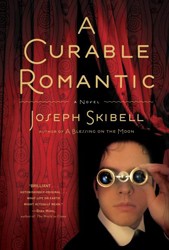According to Bette Davis, “Old age ain’t no place for sissies,” and the book Blaustein’s Kiss explains why in great detail. The humiliations, indignities, and sad realities of deteriorating bodies, minds, and relationships are pinpointed precisely in this book of short stories which are embedded in Jewish life.
“Shayna Kupp,” the first story, relates the drama of seder invitations. Cousin Fran has been the family hostess for years and Laura, the main character, always makes the charoses (a mixture of ground nuts and wine meant to resemble the mortar used by Pharaoh’s Jewish slaves between the bricks of the structure they were told to build). Laura refuses the invitation of her daughter, Jessie, to fly out to the West Coast to attend her seder with her non-Jewish husband and her infant. Instead, she offers them a place at the usual seder held at her cousin Fran’s, but suddenly realizes that without them there she has no one she really wants to sit near, that the tradition of going to the same person’s home for the seder every year is not as important as celebrating it with her daughter. The story illustrates the power of tradition and how self-actualization requires great effort in order to break from safe routines.
In another two stories, Felsenfeld explores the difficult subject of Alzheimer’s from the caretaker’s position. “The Lover” explores the feelings of Julia, a daughter visiting her Alzheimer’s‑afflicted mother in a care facility. Her feelings vary from fear of spending time with a mother who is vacant to joy at the realization that her mother, Sylvia, is in a relationship with another resident, George. However, her over-identification with her mother and constant watchfulness (reminding her to put on earrings that George has fashioned for her although she has no recollection of them), causes her great pain, throughout. The unexpected loss of George and her mother’s forgetful reaction to it quite perplexes her.
The title story, “Blaustein’s Kiss,” explores Alzheimer’s patient Ben Blaustein’s inner thoughts. His lack of awareness of his actions is contrasted to his critical awareness of others. He is shown to be a highly intelligent man, but blind to his own flawed behavior — as so many of us are. After he is overly romantic to Meryl, the daughter of his recently deceased, former lover, Meryl’s consciousness that takes over the story with a very surprising ending.
These stories capture the thoughts and the environments surrounding the aging with rare honesty. Both the attitudes of the aged characters and their closest relatives are carefully delineated. The stories are sad but illustrate how average people tend to pick up their lives where they left off after a major tragedy.
- Precious Haroset by Jessica Soffer
- How to Have “The Talk” by Sara Davidson
- Interview with Roz Chast by Tahneer Oksman





